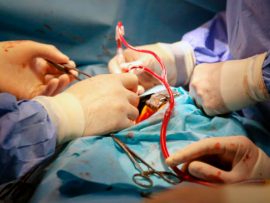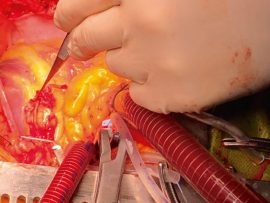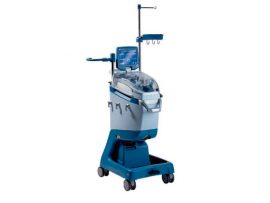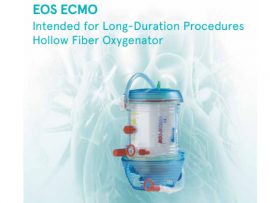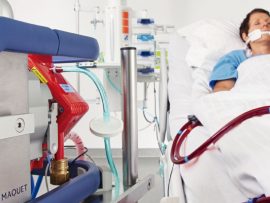Abstract OBJECTIVES: Examine the: 1) relative role of hemodynamic determinants of acute kidney injury (AKI) obtained in the immediate postcardiac surgery setting compared with established risk factors, 2) their predictive..
Read MoreAbstract Dear Editor, Acute kidney injury (AKI) frequently occurs as a complication in patients undergoing cardiac surgery, with reported incidence rates ranging from 20 to 40% []. The development of..
Read MoreAbstract Objective: To evaluate whether a machine learning algorithm (i.e. the “NightSignal” algorithm) can be used for the detection of postoperative complications prior to symptom onset after cardiothoracic surgery. Summary..
Read MoreAbstract Background Acute microcirculatory perfusion disturbances and organ edema are important factors leading to organ dysfunction during cardiac surgery with cardiopulmonary bypass (CPB). Priming of the CPB system with crystalloid..
Read MoreAbstract Background In this pilot study, we investigated continuous cerebral blood flow velocity measurements to explore cerebrovascular hemodynamics in infants with congenital heart disease undergoing cardiac surgery. Methods A non-invasive..
Read MoreAbstract Autologous blood transfusion can be achieved through different techniques, including by the patient donating blood before surgery (pre-deposit), collecting blood from the patient immediately before the operation and replacing..
Read MoreAbstract Introduction Postoperative delirium (POD) has a major impact on patient recovery after cardiac surgery. Although its pathophysiology remains unclear, there could be a correlation between cerebral blood flow (CBF)..
Read MoreAbstract Postoperative survival for complete atrioventricular septal defect (cAVSD) is excellent. Common complications of surgery include valvular stenosis/regurgitation, left ventricular outflow tract obstruction, arrythmias, and residual defects. We report a..
Read MoreAbstract During extracorporeal membrane oxygenation (ECMO) support, the high shear stress in the ECMO circuit results in increased proteolysis of von Willebrand Factor (VWF), loss of VWF high molecular weight..
Read MoreAbstract Background Reports of intravascular thrombosis and cardiac complications have raised concerns about the safety of COVID‐19 vaccinations, particularly in patients with high cardiovascular risk. Herein, we aimed to analyze..
Read MoreAbstract Early cardiac surgery in neonates and infants with congenital heart disease has been performed since the middle to late years of the twentieth century. To date, there are very..
Read MoreAbstract Rationale Acute renal failure (ARF) is one of the most serious complications of cardiopulmonary bypass (CPB) surgery. Serum creatinine level is a key compound examined to understand whether renal..
Read MoreAbstract Objective To explore the clinical effect of predeposit, salvage, and hemodilution autotransfusion on patients with femoral shaft fracture (FSF) surgery. Methods Selected patients with FSF were randomly divided into..
Read MoreAbstract Alagille syndrome is an autosomal dominant disorder that is caused by heterozygous mutation of JAG1 or NOTCH2 gene that impacts several multisystem organs including but may not be limited..
Read MoreAbstract The continuous contact between blood and the foreign surface of the extracorporeal membrane oxygenation (ECMO) circuit contributes to hemostatic, inflammatory, and other physiological disturbances observed during ECMO. Although previous..
Read MoreAbstract In critically ill patients with moderate to severe acute respiratory distress syndrome (ARDS) receiving invasive mechanical ventilation, prone positioning for 16 hours/day has been shown to confer significant mortality..
Read MoreAbstract Over the past decade, extracorporeal life support (ECLS) has gained increasing utilization in the management of refractory cardiogenic shock (CS) with a class IIaC recommendation according to the latest..
Read MoreAbstract Predictive survival models have been proposed to esti-mate survival rates in patients with refractory cardio-genic shock considered for veno-arterial extracorporeal membrane oxygenation (VA-ECMO) [1, 2]. Notably, the Survival after..
Read MoreAbstract Target values for arterial carbon dioxide tension (PaCO2) in extracorporeal membrane oxygenation (ECMO) for acute respiratory distress syndrome (ARDS) are unknown. We hypothesized that lower PaCO2 values on ECMO would..
Read MoreAbstract Introduction Prevention of acute kidney injury during cardiopulmonary bypass (CPB) is still a challenge and has been the object of numerous studies. The incidence of acute kidney injury in..
Read MoreAbstract Objective This study aims to analyze the risk factors for early postoperative brain injury in patients undergoing cardiovascular surgery and explore the predictive value of transcranial color Doppler (TCCD)..
Read MoreAbstract Intracardiac air remains an unsolved problem in the realm of cardiac surgery, leading to embolic events encompassing conduction disturbance, heart failure, and stroke. Transesophageal echocardiography allows the visualization of..
Read MoreAbstract Introduction and importance Perioperative anesthetic management in cases of severe airway obstruction with positional symptoms can be associated with difficulties in ventilation or intubation, with a risk of acute..
Read MoreAbstract Background We previously found that cardioplegic arrest and cardiopulmonary bypass are associated with altered coronary arteriolar response to serotonin in patients undergoing cardiac surgery. In this study, we investigate..
Read MoreAbstract Reports on cases of factor Ⅴ (FⅤ) deficiency complicated by platelet function disorders in patients undergoing cardiac surgery are rare, and the utilization of thromboelastography in such cases is..
Read MoreAbstract Significance Cerebral oximeters have the potential to detect abnormal cerebral blood oxygenation to allow for early intervention. However, current commercial systems have two major limitations: (1) spatial coverage of..
Read MoreAbstract Background. Withdrawal of life-sustaining therapy (WLST) performed in the circulatory determination of death (DCD) donors leads to cardiac arrest, challenging the utilization of the myocardium for transplantation. The rapid..
Read MoreAbstract Background: Acute respiratory distress syndrome (ARDS) presents a significant challenge in critical care settings, characterized by compromised gas exchange, necessitating in the most severe cases interventions such as veno-venous extracorporeal..
Read MoreAbstract Background Perioperative myocardial injury (PMI) is associated with increased mobility and mortality after noncoronary cardiac surgery. However, limited studies have developed a predictive model for PMI. Therefore, we used..
Read MoreAbstract Background The outcomes of several randomized trials on extracorporeal cardiopulmonary resuscitation (ECPR) in patients with refractory out-of-hospital cardiac arrest were examined using frequentist methods, resulting in a dichotomous interpretation..
Read More






